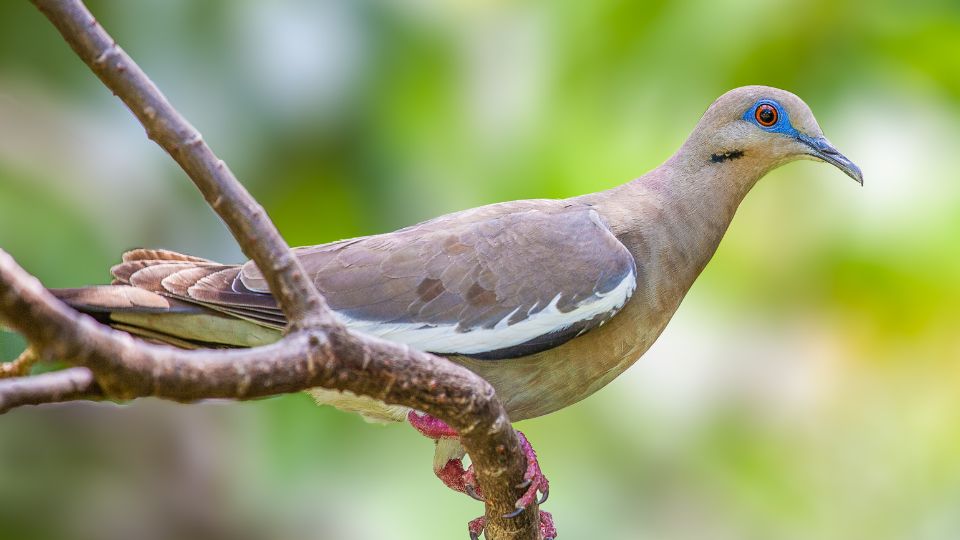The 7 types of doves include the common ground dove, the mourning dove, pigeons, eurasian collared doves, spotted doves, inca doves, and white-winged doves. All of these doves are members of the Columbidae family.
The mourning dove is the most common dove species in North America, but there are 7 unique species of dove found in America. The Columbidae is the only surviving family in the Columbiformes order.
Columbiformes include pigeons and doves. Though they are extinct, Dodos are also part of the Columbiformes order. Doves and other Columbidae species are generally compact birds with small heads and short but graceful necks.
How else can you identify the different types of doves, and what makes each species of this North American bird special?
First, let’s cover a common question about the difference between doves and pigeons.
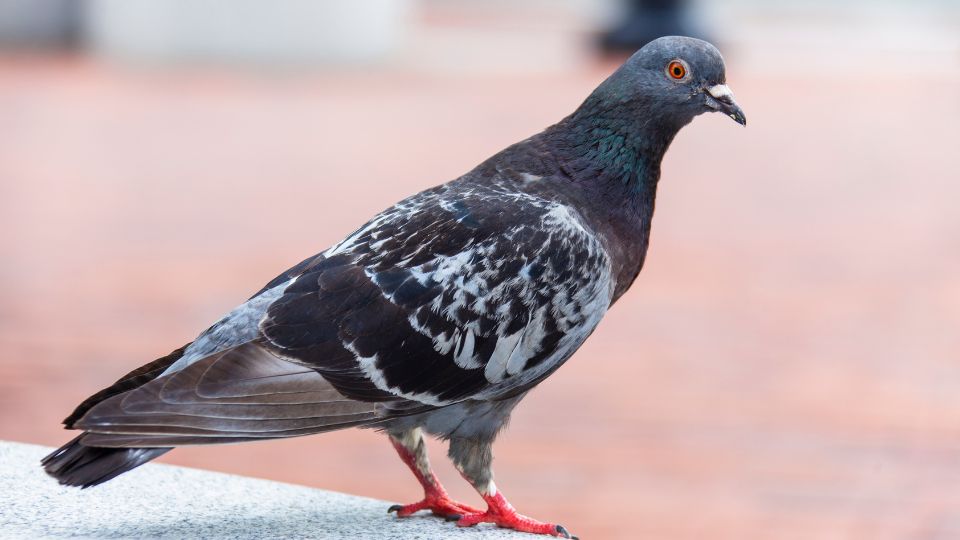
What is the difference between Pigeons and Doves?
Colloquially speaking, doves are smaller species from the Columbidae family, and pigeons are larger. Technically the difference between the two is in everyday language use, not taxonomy. Doves that are called “pigeons” tend to have a dark grey appearance, and doves have a lighter creme, tan, or white color.
While we tend to differentiate between doves and pigeons based on size, all doves and pigeons belong to the same taxonomic family, Columbidae. Depending on your language and where you live, the terms pigeon and dove are used interchangeably to describe any of the over 300 species of birds in this taxonomic family.
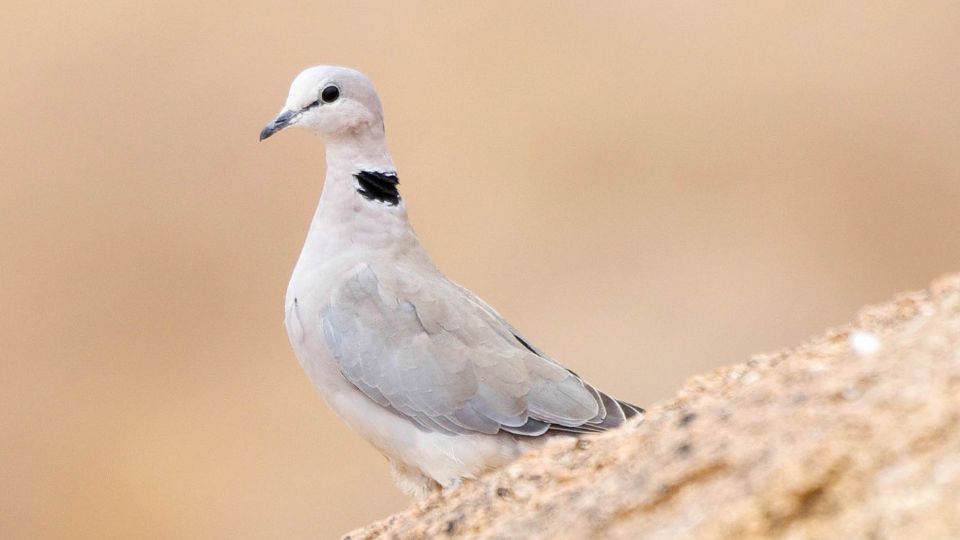
What is the most common dove in North America?
The mourning dove (Zenaida Macroura) is the most common in America. Of the 400 million estimated doves in North America, around 350 million are mourning doves.
The mourning dove is sometimes called the turtle dove. Like all doves, mourning doves are small, primarily grayish brown birds. Small black feathers dot both wings, though the pattern is not symmetrical. One of the most distinctive features of the mourning dove is the single black spot at the top of their neck, directly below each eye.
Mourning doves can be found year-round in Mexico, most of America, and southern Canada. During the breeding season, they range as far north as Alaska. During cooler months, mourning doves will migrate as far south as Panama.
Despite dove hunting claiming approximately 24 million a year, the mourning dove population is stable.
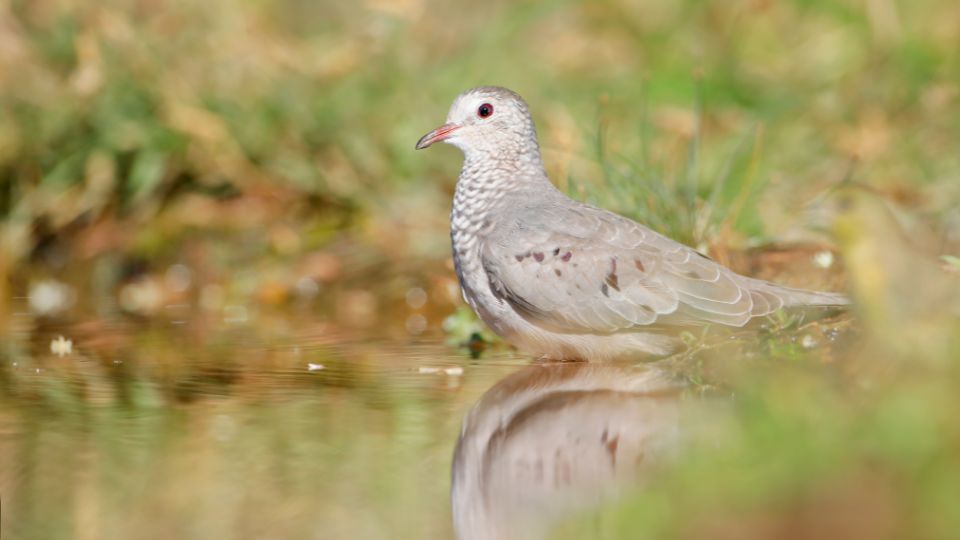
How do you identify common Ground Dove?
Common ground doves (Columbina Passerina) are smaller than other dove species with a short wingspan, short square tails, and short legs. Their thin bill is pink or red with a gray tip.
The overall shortness of their features gives the common ground dove a plump appearance. They can also be identified by dark feathers dotting their wings and an overall lighter-colored head.
The feathers on their head and throat have a crimped appearance as if they’re ruffled rather than lying smooth and flat. These tiny doves are only slightly bigger than a house sparrow!
Common ground doves are found in the southernmost portion of the United States to the northernmost part of South America. While common ground doves sometimes migrate short distances in colder weather, they tend to stay close to their home territory.
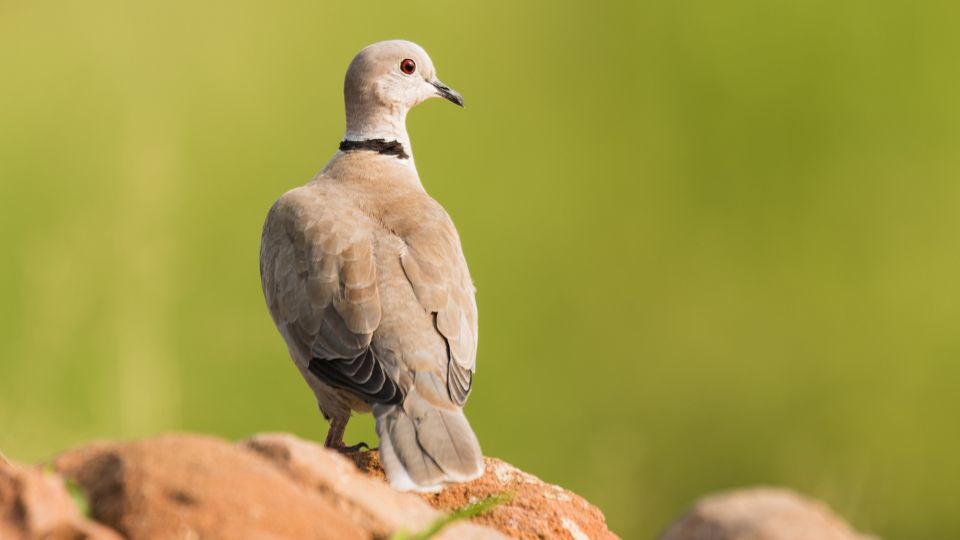
How do you identify a Eurasian Collared Dove?
Eurasian collared doves have a fawn brown body, long squared tail feathers, and a telltale black banding on the back of their neck. This banding is called a collar. Their bills are thin and black, and their feet are a reddish color.
Eurasian collared doves (Streptopelia decaocto) are not native to North America. After being introduced to the Bahamas in the 1960s, their population has spread. Their estimated United States population is between 400 and 500 thousand.
Eurasian collared doves are considered invasive. Since their introduction to North America, their range expansion has outpaced their European expansion.
They are considered a game bird in places like Texas, where dove hunting is popular.
The Eurasian collared dove can be found year-round in the western two-thirds of the United States and Northern portions of Mexico. There are scarce year-round populations along the Canadian-US border in British Columbia, Alberta, and Saskatchewan. Southern Mexico also has a small population of Eurasian collared doves year-round.
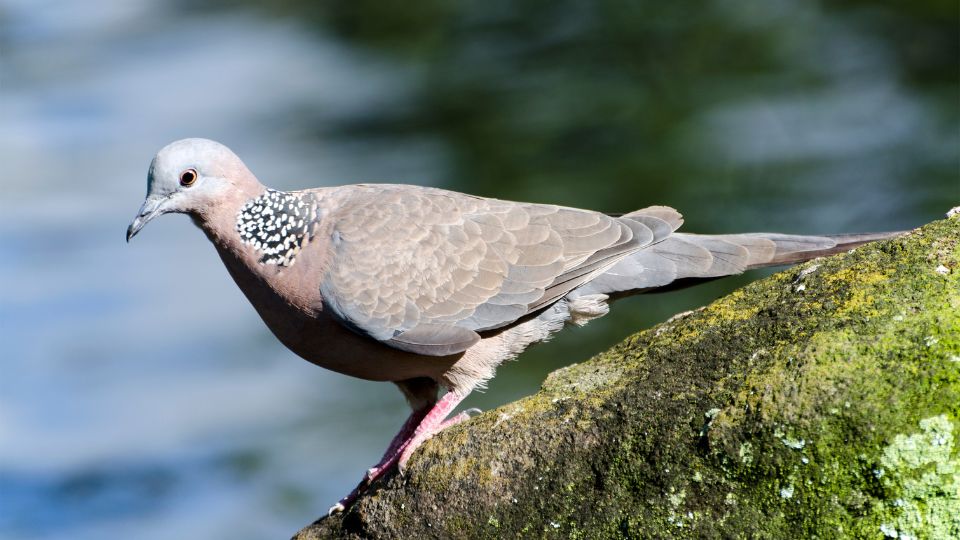
How do you identify a Spotted Dove?
The spotted dove (Spilopelia Chinensis) is easily identified for the dark patch of feathers on its shoulder with white spots. It has brown eyes and a black bill. The size of the spotted patch depends on the subspecies.
The spotted dove is also called the mountain dove, the pearl-necked dove, the lace-necked dove, and the spotted turtle dove. Despite being introduced in Los Angeles in 1916, the spotted dove has a very small population in the United States and is in decline.
In their native continent of Asia, the spotted dove population remains strong. Since their introduction over a century ago, they have only managed to gradually spread to a few other parts of Southern California like San Diego and Bakersfield.
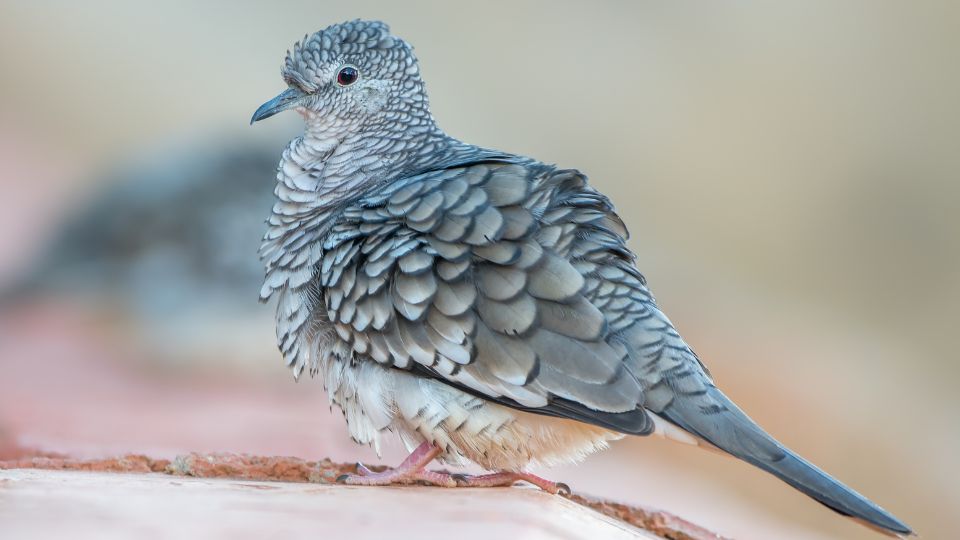
How do you identify an Inca Dove?
The Inca dove (Columbina Inca) is a small gray dove with a long tail. Their feathers are dark along the edges, which makes the Inca dove appear constantly ruffled. Some even say the feathers look like scales!
Inca doves are also called the Mexican dove. They have black eyes and a black bill. Their feet are pink with black toenails. They prefer open woodlands, deserts, parks, and urban areas.
Inca doves are primarily found in Mexico, but range into Texas, New Mexico, Arizona, and the eastern California-Arizona border. They can also be found in Central America. There are estimated to be about 600 thousand Inca doves in the US.
Inca doves have a unique roosting behavior, stacking on top of each other for warmth. This behavior is called “pyramid roosting.”
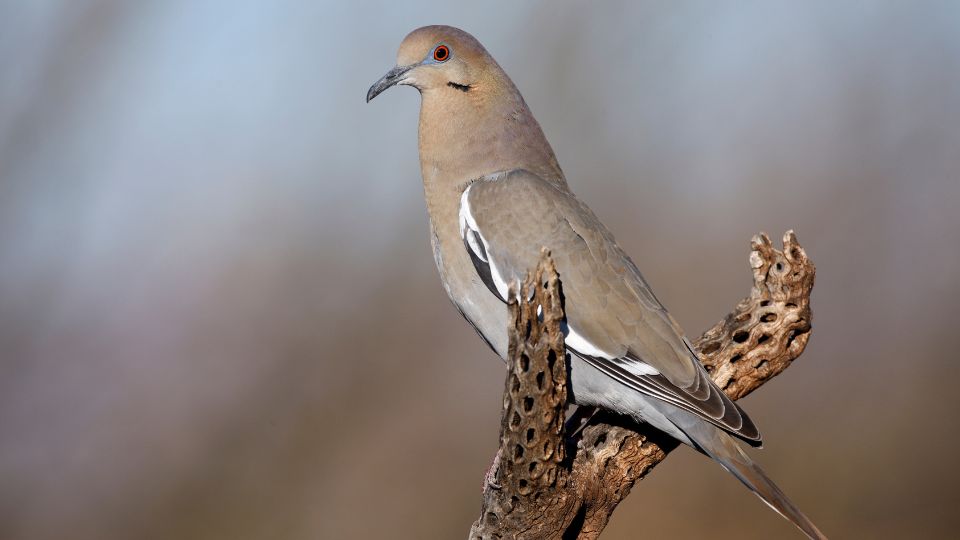
How do you identify a White-winged Dove?
White-winged doves (Zenaida Asiatica) are easily identifiable by the white edge on each wing. They also have a distinctive black diagonal stripe on their cheek. Aside from the white wing feathers that gave the white-winged dove its name, they have short, square tail feathers with white tips. White-winged doves have red eyes and a black bill.
There are an estimated 9.8 million white-winged doves, with the population continuing to increase. Their conservation status is designated as least concern. White-winged doves are primarily desert dwellers who feed on cactus fruit and nectar from cactus flowers. The white-winged dove is an important pollinator in regions with giant saguaro cactus.
White-winged doves are found year-round in southern Arizona, New Mexico, and most of Texas. They can also be found in Mexico, Central America, and areas bordering the Gulf of Mexico.
Despite having so many unique features, these 6 dove bird species in the United States have a lot in common. Like all doves, they mate for life, with the male dove cooing to attract a potential mate. Doves have an average of three broods per breeding season. Doves prefer open habitats for both roosting and nest sites.
Dove nests are built on or near the ground, and both parents share incubation duties. Male and female doves feed baby doves–called squabs–via crop milk. Crop milk is sometimes called pigeon milk.
They’ve also adapted well to urban areas and enjoy bird feeders filled with sunflower seeds, millet, and cracked corn. Doves also forage seeds and grains from the ground. Since their diet is dry and provides little hydration, a bird bath is best to attract doves to your backyard bird flock.

